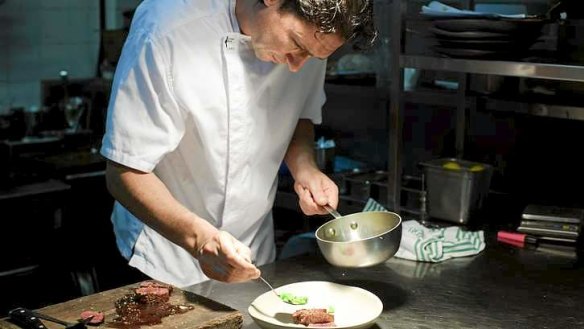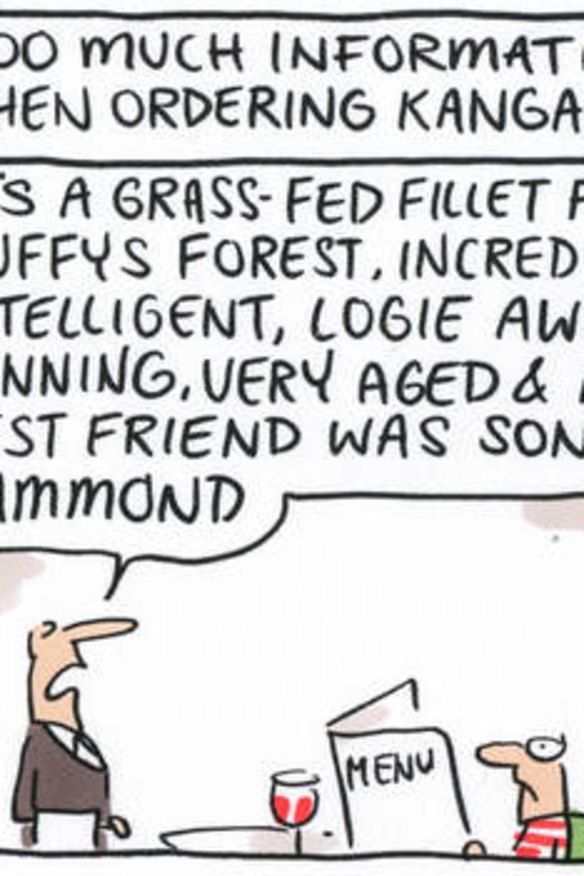Diners dished up provenance with their kangaroo

Order a steak and chances are you'll be provided with plenty of information about its provenance - such as a fillet, from a black angus, weighing 20 ounces, raised in the Hunter Valley and aged for 20 days.
The idea is that, when the pressure is on in the kitchen, the chef knows exactly what he is getting and precisely how long it takes to cook and the customer, increasingly discerning, knows the animal has had a decent life.
But order kangaroo and you, and the chef, will know not much at all.
That is about to change with the launch this week (Tuesday) of the Paroo range of kangaroo from the industry's largest supplier, Macro Meats, based in Adelaide.
The intention is to provide chefs with consistency in the quality of cut and also in portion size so the chef knows how best to cook it. The idea is that if customers enjoy kangaroo in a restaurant they are then more likely to go home and cook it themselves.
It seems that not all kangaroos are born equal. Age, breed and the environment they live in all influence the quality of the cut.

The Paroo range of meats are harvested from only four areas - the Paroo Darling region in far west NSW, the Warrego River region in Queensland, and the North Eastern Pastoral District and Central West regions of South Australia. The best cuts are from males and the red kangaroo is preferred.
Ray Borda, managing director of Macro, said: ''We know the areas that produce the best kangaroo: it depends on rainfall, the type of grasses they eat and their availability. With the Paroo range every steak or fillet will be graded and the same size. It is important so that the chef knows how long to cook it - with only 1 per cent fat in kangaroo meat it dries out quicker with cooking. If anyone says they had kangaroo and it was a bit chewy that's likely to be because it was overcooked.
''The chefs are our champions and they … will cook it best.''
It seems the animal rights lobby is losing the battle to deter customers from eating kangaroo, with consumption growing annually by 20-30 per cent. Producers say that kangaroo, because of the low fat content, is increasing popular with fitness enthusiasts. They also argue that it has a better life than most farm animals and has better environment credentials than sheep, eating and drinking only about a quarter as much. It also produces less methane than cows.
The Paroo range will be unveiled at the Executive Chefs Club in Sydney on Tuesday at The Sebel Pier One restaurant in Walsh Bay by chef Simon Bryant from television's The Cook & The Chef.
He said: ''I cook tenderloin quickly at a high temperature so that it is below medium rare. I love this product and never have a problem with it but if you overcook it then you are not putting your best foot forward.
''There's a movement among chefs about what we are doing with our animals - kangaroo environmentally is a good choice. It's good for the land and doesn't have any negative effects.''
Restaurant reviews, news and the hottest openings served to your inbox.
Sign up